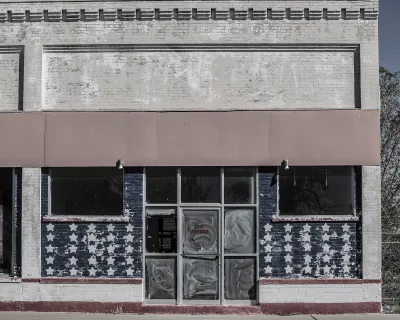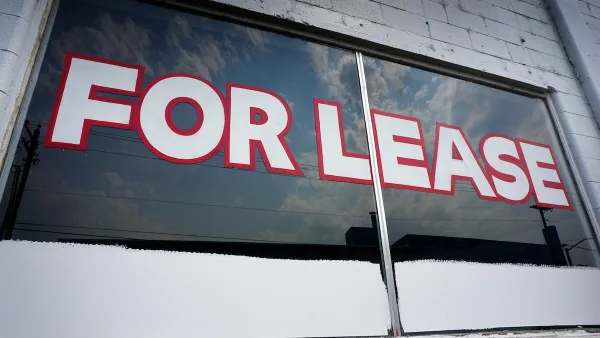A drop in demand for retail space began well before the seismic shifts of the pandemic.

In an article for Slate, Leah Brooks and Rachel Meltzer describe how the retail vacancy crisis began well before the COVID pandemic that accelerated it.
According to the authors, “Since 2012, almost a decade before we can attribute any decline to COVID, the amount of newly leased retail square feet flatlined and even declined in some cities. Also since 2012, retail rents have flattened or declined, and retail spaces sit empty longer between tenants.”
The article asserts that most cities’ zoning codes call for too much retail, leading to inevitable vacancies. This is in part “Perhaps because zoning for ground-floor retail is practically an act of faith among urban planners,” who operate on the belief that mixed-use zoning with ground-floor retail leads to vibrant, walkable neighborhoods. “However, the benefits from this type of planning are nullified when those storefronts sit vacant. Streetscapes pockmarked with dark windows and sidewalks with less foot traffic and fewer eyes can invite illicit and unsafe activity and may even suppress demand for living near those corridors.”
As online shopping and remote work continue to grow, there is no foreseeable resurgence in brick-and-mortar retail, the authors argue. Planners should focus on concentrating retail near transit hubs and mixed-use developments while allowing for residential conversions of spaces where it makes sense.
FULL STORY: Cities Planned Their Way Into the Retail Vacancy Crisis

National Parks Layoffs Will Cause Communities to Lose Billions
Thousands of essential park workers were laid off this week, just before the busy spring break season.

Retro-silient?: America’s First “Eco-burb,” The Woodlands Turns 50
A master-planned community north of Houston offers lessons on green infrastructure and resilient design, but falls short of its founder’s lofty affordability and walkability goals.

Delivering for America Plan Will Downgrade Mail Service in at Least 49.5 Percent of Zip Codes
Republican and Democrat lawmakers criticize the plan for its disproportionate negative impact on rural communities.

Test News Post 1
This is a summary

Test News Headline 46
Test for the image on the front page.

Balancing Bombs and Butterflies: How the National Guard Protects a Rare Species
The National Guard at Fort Indiantown Gap uses GIS technology and land management strategies to balance military training with conservation efforts, ensuring the survival of the rare eastern regal fritillary butterfly.
Urban Design for Planners 1: Software Tools
This six-course series explores essential urban design concepts using open source software and equips planners with the tools they need to participate fully in the urban design process.
Planning for Universal Design
Learn the tools for implementing Universal Design in planning regulations.
EMC Planning Group, Inc.
Planetizen
Planetizen
Mpact (formerly Rail~Volution)
Great Falls Development Authority, Inc.
HUDs Office of Policy Development and Research
NYU Wagner Graduate School of Public Service





























